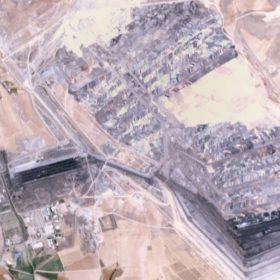
An investor tool examining the coal fleets of major global power companies has offered up analysis which flies in the face of arguments solar and wind generation could help turn around the debt-saddled South African utility.
Whilst an investor tool drawn up by London-based non-profit Carbon Tracker has spelled out how PV and onshore wind power can already outcompete coal power generation on price in many markets, its findings on South Africa are likely to disappoint the renewables industry in that country.
With South Africa suffering regular blackouts and the government seeking radical solutions to reduce the debt mountain crippling state owned utility Eskom, the nation’s renewable industry has called for the power company to abandon costly coal generation in favor of solar and wind.
However the verdict delivered by the Mainstream Investor Tool put together by Carbon Tracker – to inform investors of the economic risks of continuing with coal generation – is that developing new solar and wind generation facilities will only become cheaper than operating existing coal facilities in 2031.
That contrasts starkly with the advice given to investors in the many other power companies analyzed by the tool, with new renewables capacity rated as already cheaper than existing coal facilities in the U.S., U.K., Poland, Spain, Germany, India, Finland, Italy, Slovakia and Portugal.
Stranded assets
The tool does, however, spell out how exposed the ailing South African utility is to the risk of stranded generation assets, given its reliability on coal. According to the Carbon Tracker figures, the 47.5 GW of generation capacity spread across Eskom’s 99 coal assets make up 85% of its total electricity generation capacity and leave it exposed to having a potential $50.4 billion of its assets stranded in dead coal facilities.
It is unclear whether Eskom is in similar, potential, dire straits to Polish power company PGE which, according to Carbon Tracker, has $11.7 billion worth of coal assets at risk of being stranded – 266% of the company’s estimated market capitalization of $4.4 billion. The uncertainty stems from the fact Carbon Tracker does not have an estimated market cap for Eskom but PGE has a similar proportion of its generation portfolio tied up in coal – 84%. By contrast with South Africa, investors in PGE are advised developing new renewables capacity in Poland is already cheaper than running the utility’s coal fleet.
The investor tool offered optimistic scenarios for renewables versus coal in most cases with near-term tipping points due for utilities assessed in the Netherlands (where new renewables will undercut existing coal generation next year), China and Czechia (2021), Bulgaria (2022) and newly crowned solar player Vietnam (2023). The picture was more pessimistic in Indonesia where, depending on the utility assessed, renewables would gain the upper hand in 2026 or 2028, and in South Korea (2027) and the Philippines (2029).
Russia a long way off
With renewables not set to supply a more convincing case than existing coal assets in South Africa for another 12 years, the outlook was even grimmer in Russia, where the tipping point would be due in either 2035 or 2039.
The Carbon Tracker Tool bases its assessments on a sub-two degrees Celsius climate change scenario where the world’s remaining carbon credits would be afforded the coal operations running at the most economic rate. It posits stranded risk estimates on the assumption more costly generation plants would be the first to go to the wall.
Australia provides a curious anomaly, with the tool advising investors in NRG Energy new renewables are already cheaper Down Under than existing coal but telling stakeholders in AGL Energy the tipping point will arrive in 2026 and investors in Engie the changeover won’t occur until 2037.
Holders of stock in Indian power giant NTPC – which operates a 160-project, 61.1 GW coal portfolio – are advised renewables already beat the economic case for coal and the business is sitting on a stranded assets risk of $11 billion, representing 57% of the value of a $19.2 billion business for which coal supplies 87% of its generation capacity.
Lắp đặt điện mặt trời Khải Minh Tech
https://ift.tt/2X7bF6x
0906633505
info.khaiminhtech@gmail.com
80/39 Trần Quang Diệu, Phường 14, Quận 3
Lắp đặt điện mặt trời Khải Minh Tech
https://ift.tt/2ZH4TRU
Không có nhận xét nào:
Đăng nhận xét